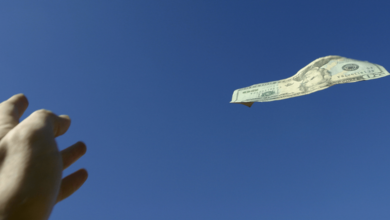Decoupling Correlations: Global Markets since COVID-19

Correlations between world stock markets began to increase in the 1970s. This trend endured for nearly a half century as globalization took hold and defined much of the era. But that all changed when COVID-19 broke out in earnest in February 2020.
While tariff disputes had already disrupted supply chains in the years prior, the onset of the global pandemic in early 2020 accelerated the decoupling among global equity markets and transformed their relationship to one another, ushering in what may be a regime change in world finance.
Our examination of stock market indices since 2015 reveals one clear takeaway: Every single index’s average correlation with all other indices has fallen.

For most, the drop was slight. For instance, the S&P 500’s correlation with all other markets fell from 0.71 from 2015 to 2022 to 0.66 during the January 2022 to December 2023 time frame. But for the Shanghai Stock Exchange Composite Index (SSE) and the Hang Seng (HSI), in Mainland China and Hong Kong SAR, and the RTS, in Russia, the correlations diverged from all other markets over the latter period.
| 2015 to 2020 | February 2020 to December 2023 |
January 2022 to December 2023 |
|
| S&P 500 | 0.71 | 0.70 | 0.66 |
| FTSE 250 | 0.69 | 0.71 | 0.60 |
| DAX | 0.68 | 0.71 | 0.64 |
| CAC 40 | 0.68 | 0.69 | 0.62 |
| NKX | 0.62 | 0.63 | 0.56 |
| HSI | 0.56 | 0.35 | 0.22 |
| SSE | 0.42 | 0.35 | 0.16 |
| TSX | 0.70 | 0.73 | 0.65 |
| RTS | 0.57 | 0.42 | 0.10 |
| BVP | 0.65 | 0.68 | 0.63 |
| KOSPI | 0.54 | 0.59 | 0.37 |
| SNX | 0.56 | 0.63 | 0.50 |
| IPC | 0.57 | 0.65 | 0.56 |
| AOR | 0.64 | 0.71 | 0.63 |
The SSE and the HSI averaged, respectively, a 0.42 and a 0.56 correlation with all other indices from 2015 to 2020. But from 2022 to 2023, these same correlations declined to 0.16 and 0.22. The RTS’s average correlation, meanwhile, plunged from 0.57 to 0.10 across the two sample periods. These three indices experienced the largest drops in their co-movements with other global equity indices from 2015 to December 2023.
The following tables show the correlations between the various market indices and their counterparts from 2015 to 2023. In addition to the equity markets mentioned above, our analysis includes the FTSE 250 in the United Kingdom, the DAX in Germany, the CAC 40 in France; the Nikkei (NKX) in Japan, the TSX in Canada; the BVP in Brazil, the KOSPI in South Korea, the SNX in India, the AOR in Australia, and the IPC in Mexico. The average correlation across all pairs is 0.65.
Global Markets Correlation Changes
2015 to 2020
| S&P 500 | FTSE 250 | DAX | CAC 40 | NKX | HSI | SSE | TSX | RTS | BVP | KOS PI |
SNX | IPC | AOR | |
| S&P 500 | 1.00 | |||||||||||||
| FTSE 250 | 0.85 | 1.00 | ||||||||||||
| DAX | 0.82 | 0.79 | 1.00 | |||||||||||
| CAC 40 | 0.78 | 0.81 | 0.91 | 1.00 | ||||||||||
| NKX | 0.78 | 0.73 | 0.84 | 0.81 | 1.00 | |||||||||
| HSI | 0.65 | 0.55 | 0.52 | 0.54 | 0.54 | 1.00 | ||||||||
| SSE | 0.51 | 0.38 | 0.44 | 0.37 | 0.47 | 0.72 | 1.00 | |||||||
| TSX | 0.86 | 0.85 | 0.78 | 0.77 | 0.67 | 0.53 | 0.39 | 1.00 | ||||||
| RTS | 0.66 | 0.61 | 0.60 | 0.61 | 0.51 | 0.52 | 0.42 | 0.71 | 1.00 | |||||
| BVP | 0.77 | 0.72 | 0.71 | 0.69 | 0.66 | 0.69 | 0.48 | 0.72 | 0.58 | 1.00 | ||||
| KOSPI | 0.56 | 0.55 | 0.52 | 0.51 | 0.39 | 0.54 | 0.43 | 0.64 | 0.71 | 0.53 | 1.00 | |||
| SNX | 0.67 | 0.66 | 0.58 | 0.55 | 0.50 | 0.55 | 0.31 | 0.67 | 0.36 | 0.64 | 0.56 | 1.00 | ||
| IPC | 0.58 | 0.67 | 0.69 | 0.65 | 0.50 | 0.48 | 0.24 | 0.66 | 0.57 | 0.66 | 0.58 | 0.63 | 1.00 | |
| AOR | 0.77 | 0.82 | 0.75 | 0.76 | 0.67 | 0.43 | 0.33 | 0.83 | 0.54 | 0.57 | 0.53 | 0.68 | 0.60 | 1.00 |
The correlations between all indices from February 2020 to December 2023 appear in the chart below. The values in italics indicate those correlations that decreased relative to their 2015 to 2020 counterparts.

The correlations of the SSE, HSI, and RTS to most if not all other indices declined over the 2020 to 2023 sample period. Supply chain disruptions, COVID-19 countermeasures in China, and the sanctions imposed on Russia due to its 2022 invasion of Ukraine could all be potential drivers of this phenomenon. Yet even as geopolitical considerations made Russia more dependent on China over the period, the performance of their equity markets nevertheless diverged from one another.
In the United States, the S&P 500’s correlations with the NKX, HSI, SSE, and RTS fell but increased with all the others.
Global Markets Correlation Changes
February 2020 to December 2023
| S&P 500 | FTSE 250 | DAX | CAC 40 | NKX | HSI | SSE | TSX | RTS | BVP | KOSPI | SNX | IPC | AOR | |
| S&P 500 | 1.00 | |||||||||||||
| FTSE 250 | 0.84 | 1.00 | ||||||||||||
| DAX | 0.87 | 0.86 | 1.00 | |||||||||||
| CAC 40 | 0.83 | 0.87 | 0.93 | 1.00 | ||||||||||
| NKX | 0.75 | 0.70 | 0.76 | 0.73 | 1.00 | |||||||||
| HSI | 0.33 | 0.37 | 0.35 | 0.36 | 0.21 | 1.00 | ||||||||
| SSE | 0.37 | 0.35 | 0.31 | 0.29 | 0.31 | 0.63 | 1.00 | |||||||
| TSX | 0.91 | 0.87 | 0.89 | 0.88 | 0.70 | 0.39 | 0.38 | 1.00 | ||||||
| RTS | 0.44 | 0.43 | 0.50 | 0.43 | 0.54 | 0.29 | 0.31 | 0.44 | 1.00 | |||||
| BVP | 0.83 | 0.80 | 0.81 | 0.73 | 0.78 | 0.36 | 0.43 | 0.80 | 0.43 | 1.00 | ||||
| KOSPI | 0.65 | 0.65 | 0.68 | 0.62 | 0.62 | 0.22 | 0.24 | 0.76 | 0.36 | 0.65 | 1.00 | |||
| SNX | 0.70 | 0.77 | 0.67 | 0.66 | 0.65 | 0.30 | 0.35 | 0.77 | 0.46 | 0.67 | 0.74 | 1.00 | ||
| IPC | 0.77 | 0.78 | 0.81 | 0.82 | 0.66 | 0.27 | 0.31 | 0.85 | 0.32 | 0.74 | 0.69 | 0.67 | 1.00 | |
| AOR | 0.84 | 0.92 | 0.81 | 0.82 | 0.73 | 0.43 | 0.30 | 0.90 | 0.43 | 0.81 | 0.73 | 0.79 | 0.78 | 1.00 |
Our final table displays the correlations between all indices from January 2022 to December 2023, again with the values in italics signifying the correlations that dropped compared with the 2015 to 2020 period. Those in bold italics are those correlations that went negative. Here, too, the HSE and SSI correlations with nearly all other markets tailed off, particularly with both the KOSPI and SNX. This is a major pivot from the pre-pandemic years and may reflect greater competition amid supply chain disruptions and reorganizations.
Global Markets Correlation Changes
January 2022 to December 2023
| S&P 500 | FTSE 250 | DAX | CAC 40 | NKX | HSI | SSE | TSX | RTS | BVP | KOSPI | SNX | IPC | AOR | |
| S&P 500 | 1.00 | |||||||||||||
| FTSE 250 | 0.78 | 1.00 | ||||||||||||
| DAX | 0.87 | 0.85 | 1.00 | |||||||||||
| CAC 40 | 0.86 | 0.87 | 0.95 | 1.00 | ||||||||||
| NKX | 0.86 | 0.59 | 0.70 | 0.65 | 1.00 | |||||||||
| HSI | 0.21 | 0.28 | 0.27 | 0.24 | 0.02 | 1.00 | ||||||||
| SSE | 0.18 | 0.21 | 0.17 | 0.17 | 0.16 | 0.66 | 1.00 | |||||||
| TSX | 0.89 | 0.79 | 0.87 | 0.88 | 0.68 | 0.28 | 0.18 | 1.00 | ||||||
| RTS | 0.14 | 0.05 | 0.17 | 0.06 | 0.29 | 0.18 | 0.15 | 0.02 | 1.00 | |||||
| BVP | 0.84 | 0.80 | 0.82 | 0.76 | 0.83 | 0.21 | 0.26 | 0.80 | 0.17 | 1.00 | ||||
| KOSPI | 0.60 | 0.35 | 0.47 | 0.39 | 0.56 | -0.03 | -0.17 | 0.65 | -0.07 | 0.46 | 1.00 | |||
| SNX | 0.74 | 0.69 | 0.63 | 0.64 | 0.70 | -0.01 | -0.14 | 0.66 | 0.10 | 0.67 | 0.62 | 1.00 | ||
| IPC | 0.80 | 0.66 | 0.77 | 0.75 | 0.61 | 0.11 | 0.20 | 0.88 | -0.02 | 0.72 | 0.57 | 0.46 | 1.00 | |
| AOR | 0.82 | 0.87 | 0.78 | 0.81 | 0.68 | 0.43 | 0.08 | 0.87 | 0.07 | 0.87 | 0.47 | 0.73 | 0.74 | 1.00 |
Altogether, these results demonstrate the fundamental restructuring that has taken place in world equity markets since 2020. The globalization wave that took shape in the 1970s led to unprecedented synchronicity in global markets and lasted for the better part of a half century.
But judging by the market correlations in the post-COVID-19 era, that tide of internationalization has crested and begun to recede. Over the last three years, the general current of global equity markets, and particularly those of Russia and China, has gone into reverse. Whether that directional shift is short lived or the start of a sea change as consequential as that of the 1970s will be something to watch in the months and years ahead.
If you liked this post, don’t forget to subscribe to Enterprising Investor.
All posts are the opinion of the author. As such, they should not be construed as investment advice, nor do the opinions expressed necessarily reflect the views of CFA Institute or the author’s employer.
Image credit: ©Getty Images/ JamesBrey
Professional Learning for CFA Institute Members
CFA Institute members are empowered to self-determine and self-report professional learning (PL) credits earned, including content on Enterprising Investor. Members can record credits easily using their online PL tracker.





